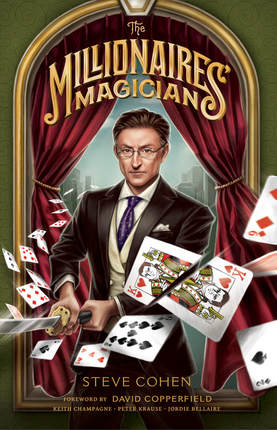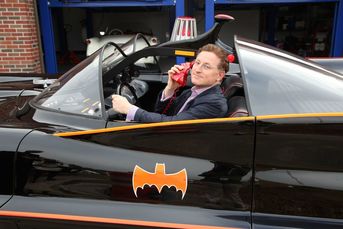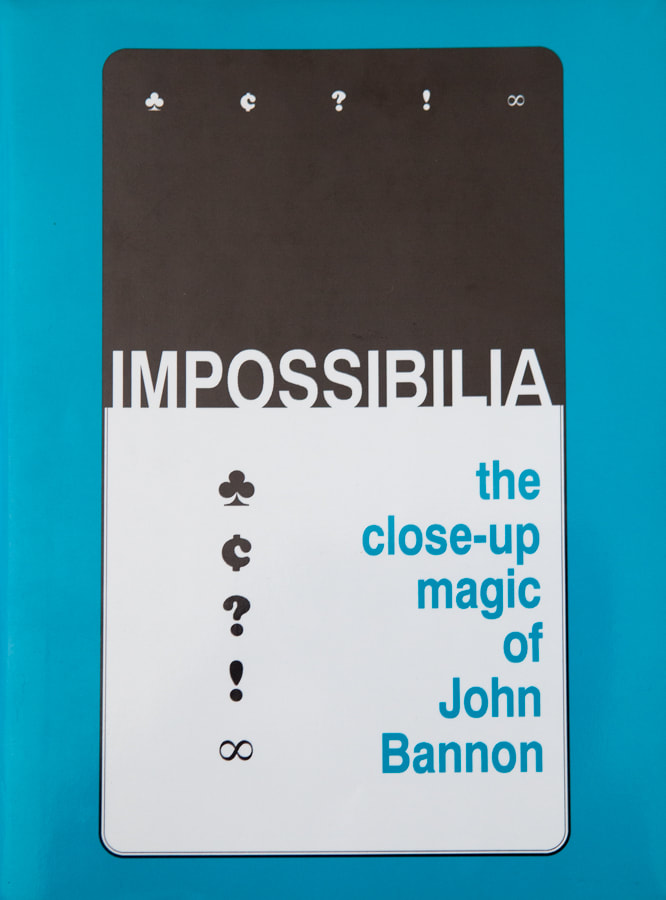
If this all seems a bit vague, read on for a more in-depth view of how Cohen came to create and publish his 110 page graphic novel with a red-headed conjuring crusader as its hero. The publication of the book will be celebrated this Thursday, November 15 with a free event at Tannen's from 5:30 to 7 p.m. Cohen will present a special performance at 6 p.m. Tannen's is located at 45 West 34th Street, 6th floor (betwen Fifth and Sixth Avenues). On a regular basis Cohen can be seen in his long-running show Chamber Magic currently presented on Fridays and Saturdays at the Lotte New York Palace hotel.
Thanks for agreeing to answer some questions about your new graphic novel, Steve. I wonder, if you could comment on how the comic came about and what motivated you to create it?
I was looking for a new challenge! I had already written a book, created a two-hour television special, and performed a solo show on stage at Carnegie Hall. My ongoing show at the Waldorf Astoria was in its fifteenth year at the Waldorf Astoria. Frankly, I needed a new outlet for my creativity.
One day, on my way to meet a friend for lunch, I had a eureka moment and decided my next project on the spot: I was going to create a comic book. It simultaneously felt thrilling and crazy. What was I getting myself into?
From conception to publication, the entire process took three years. The script took roughly three months to complete, and then the artwork took another eighteen months. Pitching the book to publishers took a lot longer than expected, and at the end of the day I ended up self-publishing. The nice thing about self-publishing is that you have total control over every detail of the project. The final product exceeded my every expectation.
Can you provide some perspective on the process of creating it? For example in developing the story were there multiple iterations? Did you get feedback from one or more people as you were working on it? And how did you work with the writer and artists who helped you realize this? And is there anything else you can say regarding the process that might not be an obvious part of developing something like this?
I never knew that so many people were involved in creating a comic book! As a child I read thousands of comics, and now have a new appreciation for all of the work that goes into a standard 22-page book. (My graphic novel is a 110-page trade paperback.)
The team I assembled included a script-writer, an artist, a colorist, a letterer, a cover artist, and a book designer. Many comic books separate the roles of penciler and inker, but my artist, Peter Krause, took on both responsibilities.
I sent script drafts to my best friend and long-time collaborator Mark Levy who offered suggestions to enhance certain scenes.
Probably the best critics were my two children, Alex and June. I read the script aloud to them as a bedtime story, to see what they responded to and what confused them. Their feedback was invaluable. [Interview continues - Click "Read More" below].

Ever since I was a boy, I wanted to be Batman. My parents still have pictures of me wearing a Batman costume to school. The idea of dressing up and playing with cool gadgets is what appealed to me. I built a utility belt out of oaktag, with hidden pouches that held rubber bands and thumbtacks. The pièce de résistance was a handmade grappling hook line made from a chain of paper clips.
Many years later I was lucky to meet the owner of one of the original Batmobiles used on the 1966 Batman television series. I flew to Detroit and spent the afternoon driving around the downtown area, in the actual Batmobile. That was definitively one item checked off the bucket list!
Of course in real life I never became a crimefighter, I became a magician. Fortunately this career choice still allows me dress up and play with cool gadgets. The graphic novel was my way of combining two of my great interests – comics and magic.
Can you talk about your involvement with comics previously?
I have been a comics fanboy for much of my life. As a child I collected Fantastic Four, Spiderman, Daredevil, Captain Marvel, World’s Finest, Justice League, Conan the Barbarian, Archie Comics, and many more.
My biggest obsession, however, was Batman. I collected Detective Comics, Batman, Legends of the Dark Knight, and all related series. The collection grew through my college years, and then I eventually gave all of my comics away, with the exception of Frank Miller’s Batman: Year One, and a few other sentimental books.
Batman: Year One was ultimately the inspiration for my graphic novel because it provides a well-rounded origin story of an existing character. I wanted to create a similar origin story for my performing character, so that visitors to Chamber Magic would have more depth of understanding where I “came from.”
How did you connect with the writer and artists who worked on the book?
A friend named Rich Miller used to work as a staff artist at DC Comics. Years ago Rich invited me into the DC office located at 1700 Broadway, across the street from the Ed Sullivan Theater. That visit made a huge impression on me. The lobby was decorated like the pages of a comic book, with life-size cutouts of Superman and Batman.
Rich introduced me to his close friend Keith Champagne, a respected artist and talented comics writer. I invited Keith to my show at the Waldorf Astoria, and we brainstormed in person and over the telephone for several weeks.
Since Keith lives in the world of comics, often lording over his own table at Comic Con events, he knows many of the top artists in the field. Keith sent me the portfolios of some candidates, but I rejected many of them because their style was too modern. The specific vision I had in mind pointed at the moody styles of Alex Toth and David Mazzucchelli.
One day, I happened across the artist Peter Krause when I read his work on the Marvel book Daredevil. I instantly knew that he was the artist for my book! Through Keith, I reached out to Pete, and convinced him to work with us on this independent project.
I was enamored by the Eisner Award winning colorist Jordie Bellaire, through her color work on Batman, Flash Gordon, and many other books. Jordie lives in Ireland, but I invited her parents (who live in the U. S.) to my show at the Waldorf. They loved the show, and I think that clinched the deal since Jordie ultimately agreed to participate in my project.
The celebrated book designer Spencer Charles had also visited my show at the Waldorf, and previously worked with me on several design projects. I invited Spencer to lay out and design the graphic novel, and he subsequently introduced me to the Australian artist Tara Phillips, who drew the cover.
In the preview that you have online there is a mentor figure named Max. Is he or anyone else in the story based on real people you’ve known?
The character of Max in the graphic novel is visually based on magician Frederick Eugene Powell, and he is named after my hero, Max Malini.
Powell was dean of the Society of American Magicians from 1922 to 1938, and to me symbolized what an old-timey magician should look like. I sent reference photos of Powell to my artist, and he based the character on those photos.
I named the character Max because I have modeled much of my career after Max Malini. We both worked at the Waldorf Astoria hotel, and we both have aimed to entertain audiences at the highest level of society. Over the years, I’ve accumulated a significant collection of original Malini memorabilia – signed photos, paintings, show tickets, illustrations, and promotional booklets. Malini has played a central figure in my development as a magician, so I named the character in his honor.
Who do you see as the audience for this? Magicians? Comic lovers?
David Copperfield was kind enough to write in the Foreword, “Like any good fable, it seamlessly weaves fact with fiction, truth with tall tale, into a memorable read.”
The graphic novel should appeal to both magicians and comics lovers, as well as anyone who loves a good yarn. I like to call it a “not-quite-autobiography” since many true elements of my life and career are woven into the story.
Fortunately I have a built-in audience at my Chamber Magic shows – visitors want to take home a memento of their special evening at the Lotte New York Palace (my new show venue). The books are also available in the hotel gift shop.
Please feel free to add anything else you’d like to say about the project.
In the world of comics, the Millionaires’ Magician would perform for people like Tony Stark, Richie Rich, Oliver Queen, and Bruce Wayne.
In real life, the Millionaires’ Magician has performed over five thousand live shows for the upper-crust of New York society, and visitors from around the world.
People who read the comic will want to visit the live show, and guests who visit the show will want to read the comic. The two offerings elegantly complement one another.
What’s next for magician, thwarter of crime Steve Cohen - either in the comics or real life?
I am looking into appearing at upcoming Comic Con events, to invite a new demographic to experience my work.
I already have a second graphic novel concept in the works, this time with a major publisher. More on that at another time…
Meanwhile, my weekly shows at the Lotte New York Palace are entering the nineteenth year, and I am already starting to plan special festivities for the twentieth anniversary show.
Guests who visit me at The Palace can enjoy a new craft cocktail I helped create: the “Think-a-Drink” cocktail. As a tribute to my show, the drink is served in a small teakettle!
###

 RSS Feed
RSS Feed